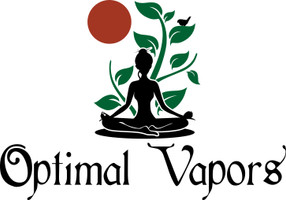Many individuals prefer natural solutions over medicinal medications when it comes to anxiety and stress management. Aromatherapy is a common method that entails inhaling essential oils via a diffuser or absorbing them through your skin. Some typical essential oils to inhale to encourage relaxation through smells are lavender, chamomile, and bergamot orange.
Herbs can aid with worry and stress, sleep difficulties, and other areas of physical and mental health, however results will vary.
Let's go more into aromatherapy and vaporising, both of which are becoming increasingly popular for their relaxing benefits. We'll go over some of the contrasts between the two techniques, as well as the latest research on their health and wellness advantages.
Aromatherapy and Essential Oils
Aromatherapy is thought to function by activating the nose's scent receptors. The receptors then send information to the limbic system, which controls emotion and mood in the brain. That's when its therapeutic and soothing effects might kick in.
Aromatherapy may not be suitable for everyone, particularly those who are prone to allergic reactions, skin irritation, or sun sensitivity. Essential oils are extremely powerful and should only be used as indicated. For example, you should only apply pure essential oil to your skin on rare occasions, and you should only use your diffuser for 30 minutes at a time, one to three times a day at most.
It's worth noting that pure essential oils are created solely from the components of flowers, herbs, and trees. Due to the high cost of pure extracted essential oils, many businesses may combine a plant's essence with additional chemicals or perfumes. They're made using a procedure that doesn't alter the plant's chemistry, but the extra components may be harmful to the body, especially when administered topically.
When you utilise essential oils in aromatherapy, they're technically evaporated as well. However, it is not the same as when using dry herb vaporizers.
Essential oil vaporizers (or diffusers) are designed to disperse an oil's smells throughout a space as a fragrance rather than for inhalation. This can also enhance the air quality in the space, depending on the type of essential oil being diffused.
Aromatherapy treatments include aromatic spritzers, bathing salts, body oils, creams, or lotions for massage, face steamers, hot and cold compresses, and clay masks, in addition to diffusers. Aromatherapy has been used for thousands of years to manage pain, enhance sleep quality, treat headaches and migraines, improve digestion, and increase immunity, among other things, in addition to lowering tension and anxiety.
While inhalable aromatherapy has been tried, and there are different vapour products available for this purpose, there is a lot of worry in the medical community about this approach, owing to a lack of study. When heated for vaping, essential oils that are normally safe for inhalation might turn poisonous.
Vaping for Anxiety and Stress
Let's quickly review the two active chemicals or cannabinoids found in marijuana: tetrahydrocannabinol (THC) and cannabidiol (CBD) (CBD). THC is the psychoactive ingredient that gives marijuana its "high," whereas CBD is a non-psychoactive molecule that is more widely employed for medicinal purposes.
Cannabis strains differ in terms of whether they are predominantly sativa or indica. Sativa has a more energising high than indica, which is more muted and restful. There are also a plethora of marijuana strains available, each with a varied concentration of cannabinoids.
Hybrid mixes are created when sativa and indica are blended more equally within a strain. All of this means that if you're experimenting with cannabis as a stress and anxiety medication, you won't run out of alternatives anytime soon. Depending on the type and severity of your symptoms, different combinations of these components work better for some than others in terms of relieving anxiety and stress.

